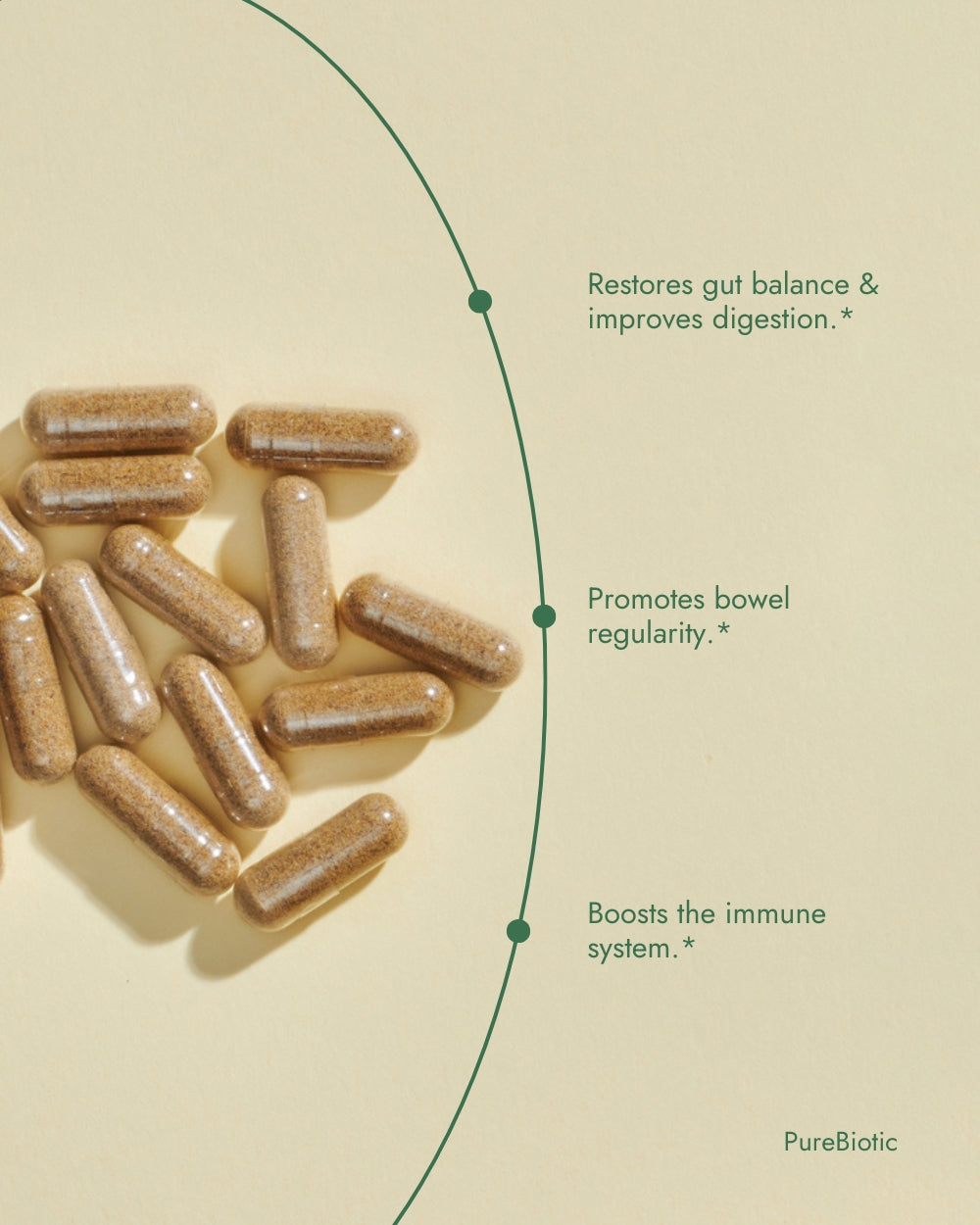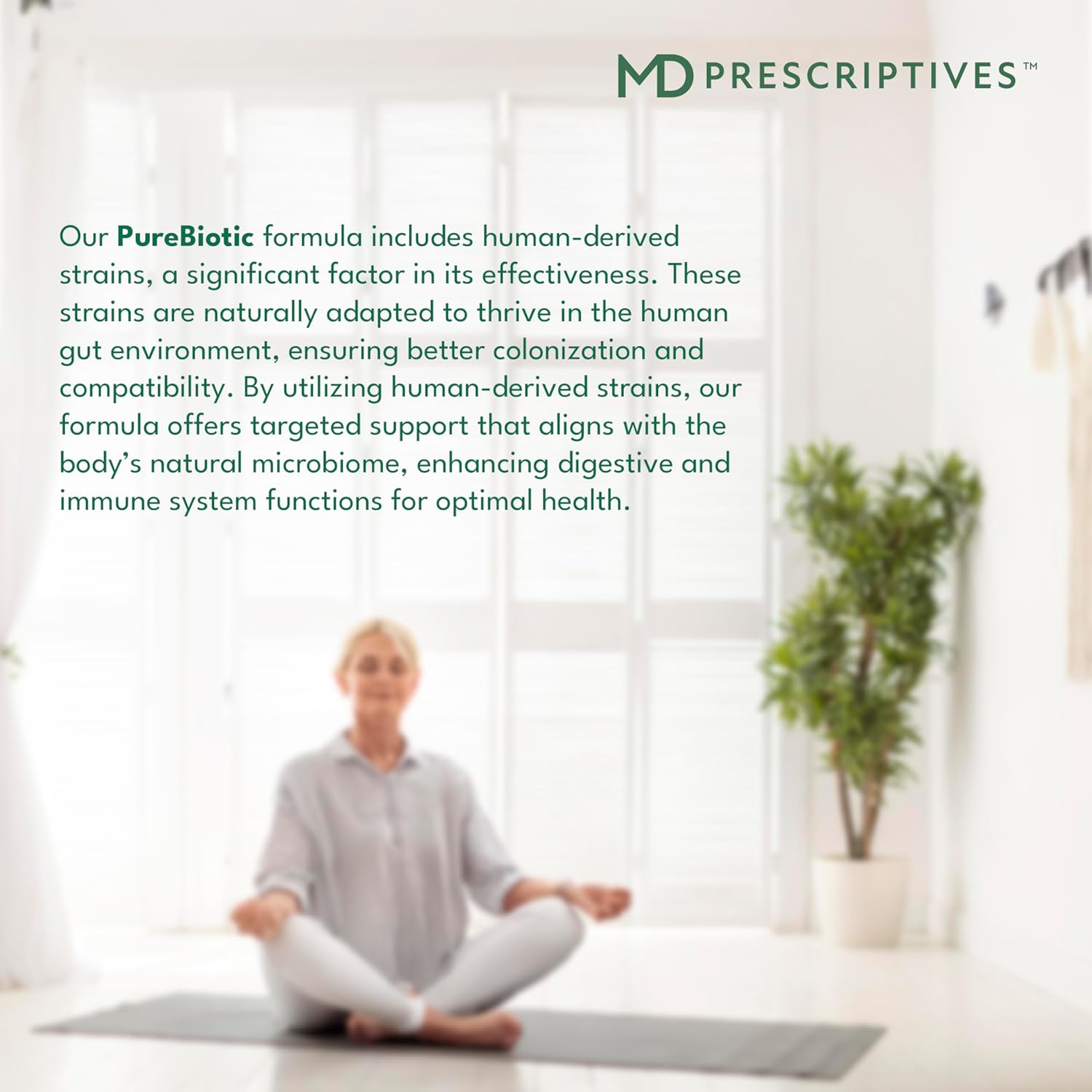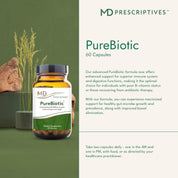PureBiotic 60 vcaps
PureBiotic™: 15 Strains, 28 Billion CFU for Optimal Gut Health and Immunity
PureBiotic™ is a potent probiotic formula that combines 15 carefully selected strains to deliver over 28 billion CFU per serving, offering comprehensive support for gut health, digestion, and immunity. Designed for maximum effectiveness, this advanced probiotic helps combat inflammation, alleviate digestive discomfort, and restore microbial balance, promoting overall well-being.*
Key Benefits:
-
Powerful Potency: With over 28 billion CFU per serving, PureBiotic™ features 15 diverse strains designed to survive stomach acid and provide robust support for gut health and immune function.
-
Convenient Dosage: Just two capsules daily provide optimal results, delivering enhanced probiotic strains that support digestion, immunity, and mental clarity.
-
Comprehensive Gut Support: Restores gut balance, improves digestion, and boosts the immune system, while supporting nutrient absorption and metabolism for better overall health.
-
Versatile Use: Ideal for daily maintenance, targeted digestive support, or post-antibiotic recovery. Dosing options can be adjusted to meet your specific health needs.
-
Noticeable Results: Promotes bowel regularity, reduces digestive discomfort, and may result in mild detox symptoms as your body adjusts to the probiotics.
How to Use:
-
Recommended Dosage: Take two capsules daily, or as directed by your healthcare provider.
High Quality Formulations
✓Quality Control: All products are clinically tested and doctor approved.
✓Pure: Non-GMO. No preservatives, magnesium stearate, dyes, fillers, wheat, gluten, starch, dairy, or corn-starch.
✓Biologically Natural Forms: No oxides and artificial forms, which the body cannot utilize.
✓Glass Bottles: Better storage. No cancer-promoting BPA or phthalates.
✓Radiation-Free: Only shipped with carriers without x-ray requirements.

Frequently Asked Questions
-
-
All our products are subject to quality control.
Our warranty provides a guarantee against manufacturer defects.
The guarantee covers any manufacturing, design, or material defect. Please notify us within 2 months of noticing any defects.
It does not cover blows, improper use, or other issues that are not attributable to a manufacturer defects.
-
Yes, we offer full and partial refunds.
Please enquire for more information about our Refund policy. -
We use all major carriers, and local courier partners. Use the shipping estimator in the cart to check your shipping rates.
MD Prescriptive PureBiotic
What an excellent product! I never realized how important gut health is to your overall health and wellbeing until I started taking PureBiotic. I feel so good! This is the second MD Prescriptive product that I use. They’re a little costly but well worth every penny!!
Purebiotic
Easy to swallow and no aftertaste.
Great products
Your prices have really gone up I love your products but will have to order less.
Severe IBS Survivor!
I have had severe IBS for over 20+ years with no resolution. Finally! A protocol and a probiotic formula that has reversed not only my flare ups but my low immunity in flu season. I haven’t been sick in years since taking this ! The strains are human derived and reverse gut damage that i had since childhood.
PureBiotic is Pure Genius
Wife and I have always struggled with constipation and gut inflammation and decided to do something about it. Why did we wait so long? I have no idea but I'm feeling better and now realize that it all starts in the gut! Great reformulation...and MD Prescriptives product line is one of the most successful supplements we've ever experienced!




























